Jacques Lipchitz
Jump to navigation
Jump to search
Jacques Lipchitz (22 August [O.S. 10 August] 1891[1] – 16 May 1973) was a Cubist
sculptor, from late 1914. Lipchitz retained highly figurative and
legible components in his work leading up to 1915–16, after which
naturalist and descriptive elements were muted, dominated by a synthetic
style of Crystal Cubism. In 1920 Lipchitz held his first solo exhibition, at Léonce Rosenberg's
Galerie L'Effort Moderne in Paris. Fleeing the Nazis he moved to the US
and settled in New York City and eventually Hastings-on-Hudson.
| Jacques Lipchitz | |
|---|---|

Jacques Lipchitz, 1935, photograph Rogi André (Rozsa Klein)
|
|
| Born | Chaim Jacob Lipschitz 22 August 1891 Druskininkai, Lithuania |
| Died | 16 May 1973 (aged 81) Capri, Italy |
| Nationality | French American |
| Education | École des Beaux-Arts |
| Known for | sculpting |
| Movement | Cubism |
Contents
Life and career
Jacques Lipchitz was born Chaim Jacob Lipschitz, in a Litvak family, son of a building contractor in Druskininkai, Lithuania, then within the Russian Empire. At first, under the influence of his father, he studied engineering, but soon after, supported by his mother he moved to Paris (1909) to study at the École des Beaux-Arts and the Académie Julian.[2]It was there, in the artistic communities of Montmartre and Montparnasse, that he joined a group of artists that included Juan Gris and Pablo Picasso as well as where his friend, Amedeo Modigliani, painted Jacques and Berthe Lipchitz.
Living in this environment, Lipchitz soon began to create Cubist sculpture. In 1912 he exhibited at the Salon de la Société Nationale des Beaux-Arts and the Salon d'Automne with his first solo show held at Léonce Rosenberg's Galerie L'Effort Moderne in Paris in 1920. In 1922 he was commissioned by the Barnes Foundation in Merion, Pennsylvania to execute five bas-reliefs.
With artistic innovation at its height, in the 1920s he experimented with abstract forms he called transparent sculptures. Later he developed a more dynamic style, which he applied with telling effect to bronze compositions of figures and animals.
With the German occupation of France during World War II, and the deportation of Jews to the Nazi death camps, Jacques Lipchitz had to flee France. With the assistance of the American journalist Varian Fry in Marseille, he escaped the Nazi regime and went to the United States. There, he eventually settled in Hastings-on-Hudson, New York.
Jacques Lipchitz, 1917, L'homme à la mandoline, 80 cm
Beginning in 1963 he returned to Europe for several months of each year and worked in Pietrasanta, Italy. He developed a close friendship with fellow sculptor, Fiore de Henriquez. In 1972 his autobiography, co-authored with H. Harvard Arnason, was published on the occasion of an exhibition of his sculpture at the Metropolitan Museum of Art in New York. Jacques Lipchitz died in Capri, Italy. His body was flown to Jerusalem for burial.
Selected works
Amedeo Modigliani, 1916, Jacques and Berthe Lipchitz
- "Sailor with Guitar" – 1914
- "Drawing of a schulpture" – 1916[3]
- "Bather" – (1916–17)
- "Woman with Book" – (1918) at Carleton College
- "Bather, bronze" – 1923–25
- "Reclining Nude with Guitar" – (1928), a prime example of Cubism
- "Dancer with Veil" – (1928)
- "Dancer" – (1929)
- "The Song of the Vowels" – (Le Chant des Voyelles), – (1931) cast bronze sculptures at Cornell University, Princeton University, UCLA, Stanford University, Kykuit Estate Gardens, Paris
- "Bull and Condor" – (1932)
- "Bust of a Woman" – (1932)
- "David and Goliath" – (1933)
- "Embracing Figures" – (1941)
- "Prometheus Strangling the Vulture" – (1944)
- "Rescue II"- (1947)
- "Mother and Child" – (1949) at the Honolulu Museum of Art
- "Bellerophon Taming Pegasus: Large Version" – (1966–1977), begun in 1966 and arrived at Columbia Law School in pieces for assembly in 1977[4]
- "Peace on Earth" – (1967–1969)
- "Government of the People" – (1976)
Gallery
-
Jacques Lipchitz, 1920, Portrait of Jean Cocteau
-
Mother and Child, 1930, Honolulu Museum of Art
-
Birth of the Muses, bronze, 1944-1950, In memory of Jerome Wiesner - in the permanent collection of the Massachusetts Institute of Technology
-
The Spirit of Enterprise, 1960, in Fairmount Park, Philadelphia




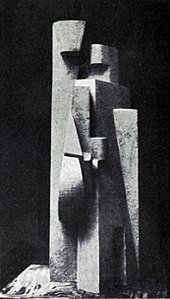
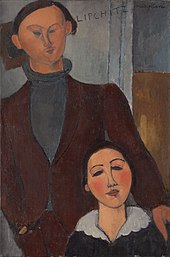





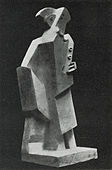
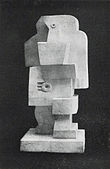
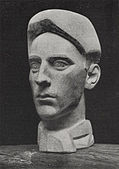

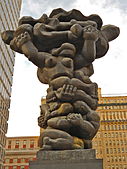
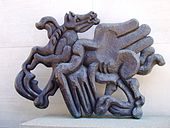









No comments:
Post a Comment